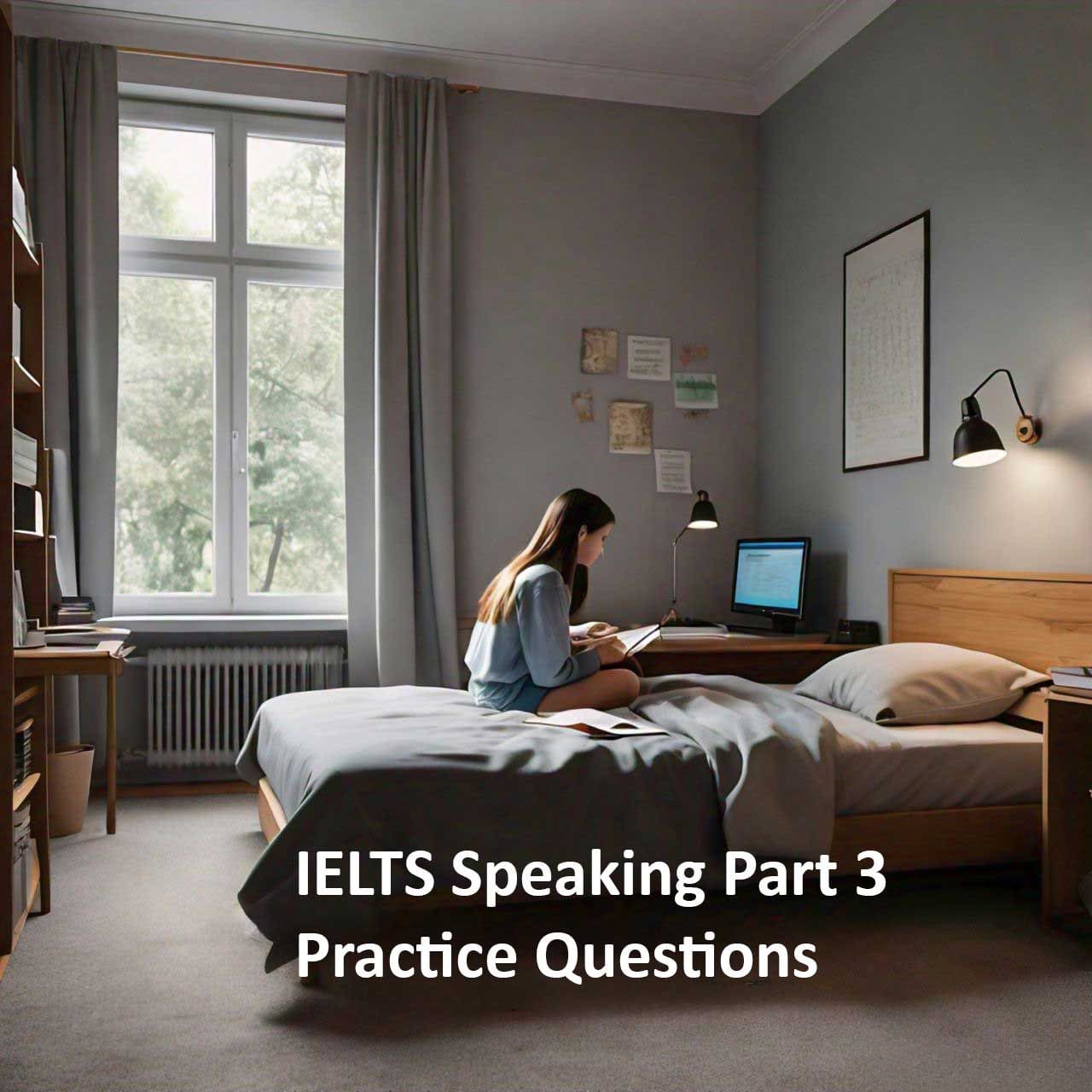The IELTS Speaking test can be daunting, especially when you’re put on the spot to answer questions on a variety of topics. One key to achieving a high score is your ability to expand your answers effectively. Giving short, terse replies can limit your score potential. Instead, you need to showcase your language abilities by providing detailed, fluent, and structured responses. In this blog post, we’ll explore strategies to help you expand your answers in the IELTS Speaking test, making your responses more engaging and reflective of your proficiency.
Table of Contents
Understanding the IELTS Speaking Test
The IELTS Speaking test is divided into three parts:
1. Part 1: Introduction and Interview (4-5 minutes)
– You’ll answer questions about yourself, your life, and your interests.
2. Part 2: Long Turn (3-4 minutes)
– You’ll be given a topic to talk about for up to two minutes. You’ll have one minute to prepare.
3. Part 3: Discussion (4-5 minutes)
– You’ll engage in a discussion with the examiner on more abstract and complex issues related to the Part 2 topic.
Expanding your answers is crucial in all three parts, but especially in Parts 2 and 3, where detailed and well-developed responses are required to demonstrate your speaking abilities.
Why Expanding Your Answers Matters
Expanding your answers in the IELTS Speaking test helps you to:
– Showcase Your Language Skills: Demonstrating a range of vocabulary, grammar structures, and fluency.
– Provide Evidence of Coherent Speaking: Illustrating your ability to organize thoughts and present them logically.
– Engage the Examiner: Keeping the conversation interesting and dynamic.
Short, simple answers can give the impression that you lack language proficiency or confidence. Expanding your responses effectively shows depth and fluency in your speaking.
Strategies for Expanding Your Answers
1. Use the 5W1H Technique
A simple yet effective way to expand your answers is to address the 5W1H questions: Who, What, When, Where, Why, and How. This technique ensures you cover multiple aspects of a topic.
– Who: Mention the people involved.
– What: Describe what happened or what is happening.
– When: Provide a timeframe.
– Where: Include the location or setting.
– Why: Explain the reasons or motivations.
– How: Describe the process or manner.
Example:
Question: “Do you enjoy cooking?”
Answer: “Yes, I do enjoy cooking. I usually cook every evening after work. My favorite dishes to prepare are Italian pasta recipes, which I learned from my grandmother. I find cooking to be very relaxing and a great way to unwind. Plus, it allows me to experiment with different ingredients and flavors.”
2. Provide Examples and Anecdotes
Giving examples and sharing personal anecdotes can make your answers more vivid and relatable.
– Use Personal Experiences: Relate your answers to your own life to add depth.
– Give Specific Examples: Mention specific instances or scenarios that illustrate your point.
Example:
Question: “What is your favorite holiday destination?”
Answer: “My favorite holiday destination is Japan. Last year, I visited Tokyo and Kyoto during the cherry blossom season. The beauty of the sakura trees in full bloom was breathtaking. I also enjoyed the vibrant culture and the amazing food, especially sushi and ramen. One memorable experience was visiting a traditional tea house in Kyoto, where I participated in a tea ceremony and learned about Japanese customs.”
3. Explain the Reasons and Causes
When answering a question, delve into the reasons behind your opinions or the causes of certain events.
– Explain Why: Provide reasons for your statements or preferences.
– Discuss Causes: Talk about the underlying causes or factors.
Example:
Question: “Why do you think reading is important?”
Answer: “I believe reading is important for several reasons. Firstly, it expands our knowledge and helps us learn about new ideas and cultures. For instance, reading historical novels has given me a deeper understanding of different eras and societies. Secondly, reading improves our language skills by exposing us to varied vocabulary and writing styles. It also stimulates our imagination and creativity, which is beneficial in both personal and professional life.”
4. Compare and Contrast
Comparing and contrasting ideas can add depth to your responses and demonstrate your ability to think critically.
– Compare Different Aspects: Discuss similarities and differences between two concepts or experiences.
– Provide Balanced Views: Offer both sides of an argument or perspective.
Example:
Question: “Do you prefer living in a city or the countryside?”
Answer: “I prefer living in a city because of the convenience and the wide range of opportunities available. For example, cities have better access to education, healthcare, and entertainment. However, I do appreciate the tranquility and natural beauty of the countryside. When I visit my grandparents’ farm, I enjoy the fresh air and slower pace of life, which can be a refreshing change from the hustle and bustle of city living.”
5. Use Linking Words and Phrases
Linking words and phrases help you connect ideas smoothly and make your speech more coherent.
– Add Information: Use “moreover,” “in addition,” “furthermore.”
– Contrast Ideas: Use “however,” “on the other hand,” “although.”
– Give Examples: Use “for example,” “such as,” “for instance.”
– Express Causes and Effects: Use “because,” “therefore,” “as a result.”
Example:
Question: “How has technology changed the way we communicate?”
Answer: “Technology has significantly changed the way we communicate. For example, smartphones and social media have made it possible to stay connected with people across the globe instantly. Moreover, video conferencing tools like Zoom have revolutionized remote work and education, making it easier to collaborate and learn from anywhere. However, despite these benefits, there are concerns about the impact of technology on face-to-face interactions and privacy.”
6. Describe in Detail
Adding descriptive details to your answers can make them more engaging and demonstrate your command of language.
– Use Sensory Details: Describe what you see, hear, smell, taste, and feel.
– Be Specific: Avoid vague statements by providing concrete details.
Example:
Question: “Can you describe a memorable meal you had recently?”
Answer: “Recently, I had a delightful meal at a small Italian restaurant in my neighborhood. The aroma of freshly baked bread and garlic filled the air as I walked in. I ordered their signature dish, lasagna, which was a perfect blend of rich, savory meat sauce and creamy bechamel layered with tender pasta. The melted cheese on top was golden and bubbling, adding a wonderful texture to each bite. To complement the meal, I had a glass of robust red wine, which perfectly balanced the flavors of the lasagna.”
7. Express Opinions and Hypothesize
Sharing your opinions and hypothesizing about scenarios shows your ability to think critically and creatively.
– Give Your Opinion: Clearly state your viewpoint and support it with reasons.
– Speculate and Hypothesize: Discuss possible outcomes or scenarios.
Example:
Question: “Do you think people will travel to space for vacations in the future?”
Answer: “I believe that space tourism will become a reality in the future. With advancements in technology and companies like SpaceX making significant progress, it seems likely that we will see commercial space travel within the next few decades. If space travel becomes more affordable and accessible, it could revolutionize the way we think about vacations. Imagine being able to visit the moon or orbit the Earth as part of a holiday! However, there will also be challenges, such as ensuring safety and managing the environmental impact of space travel.”
Practice Exercises to Expand Your Answers
To master the art of expanding your answers, try these practical exercises:
1. Timed Speaking Practice: Take a common IELTS Speaking question and practice expanding your answer for 1-2 minutes without stopping.
2. Record and Review: Record your responses to practice questions and listen to them critically. Identify areas where you can add more detail or expand your answers.
3. Partner Practice: Pair up with a study partner and take turns asking and answering questions. Give each other feedback on how to expand responses.
4. Use Flashcards: Write down questions on flashcards and practice giving detailed answers. Focus on incorporating the 5W1H technique and examples.
Conclusion
Expanding your answers effectively in the IELTS Speaking test can significantly enhance your performance and increase your chances of achieving a high score. By employing techniques like the 5W1H method, providing examples, explaining reasons, and using descriptive details, you can transform simple responses into comprehensive and engaging answers. Regular practice with these strategies will help you become more confident and fluent in your speaking. Good luck with your IELTS preparation!
Feel free to share your experiences and tips on expanding answers in the IELTS Speaking test in the comments below. Happy studying!
For more tips and insights on preparing for the IELTS, check out our other blog posts and resources.



